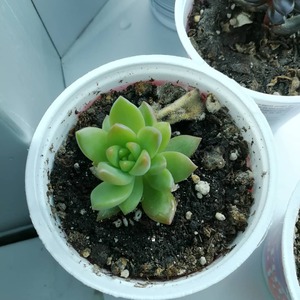Posts (269)
格桑花
02-29

Cultivate Cultural Curiosity:
One of the first steps in navigating cultural differences in relationships is to cultivate cultural curiosity. It is essential to develop a genuine interest in learning about your partner's culture, traditions, and beliefs. Ask questions and listen attentively to their experiences, allowing them to share their culture with you. This curiosity will not only deepen your understanding but also demonstrate your respect and interest in their background. Engaging in cultural activities together, such as attending festivals or trying traditional cuisine, can also be a great way to learn and appreciate each other's cultural heritage.Embrace Open Communication:
Effective communication is vital in any relationship, but even more so when cultural differences are involved. Encourage open and honest conversations about cultural values, beliefs, and expectations. Create a safe space where both partners can express themselves without fear of judgment. Active listening and empathetic responses are key to fostering understanding and resolving potential conflicts. It is important to be patient and understanding during these conversations, as cultural differences can lead to misunderstandings. By openly discussing your perspectives and actively listening to your partner, you can bridge the gap and find common ground.Challenge Stereotypes and Assumptions:
Cultural stereotypes and assumptions can hinder understanding and create barriers in relationships. Be aware of the stereotypes and assumptions that may exist about your partner's culture. Challenge these biases by seeking accurate information and questioning preconceived notions. Each individual is unique, and cultural generalizations can lead to misunderstandings and false expectations. Instead, approach your partner as an individual with their own beliefs and experiences. Encourage them to share their personal views and experiences to help debunk stereotypes and promote a deeper understanding of their culture.Seek Common Ground:
While cultural differences may exist, it is essential to identify and focus on shared values and interests. Finding common ground can serve as a foundation for your relationship and foster understanding. Engage in activities that both of you enjoy, explore mutual hobbies, or seek opportunities to celebrate each other's cultures together. By actively participating in each other's cultural practices and embracing shared experiences, you can create a sense of unity and reinforce your bond. This shared appreciation for each other's cultures can also enhance your ability to navigate differences and find compromise.Practice Empathy:
Empathy is a powerful tool for navigating cultural differences in relationships. Put yourself in your partner's shoes and try to understand their perspective. Recognize that cultural backgrounds shape our perceptions, behaviors, and reactions. Showing empathy allows you to validate your partner's experiences and emotions, fostering a deeper connection and mutual respect. It is important to be patient and understanding, especially when cultural differences lead to misunderstandings or disagreements. By actively practicing empathy, you can bridge cultural gaps and strengthen your relationship.Be Patient and Flexible:
Building understanding across cultural differences takes time and effort. Be patient with yourself and your partner as you navigate these challenges. Understand that misunderstandings may occur, and conflicts may arise. Approach these situations with an open mind and a willingness to find solutions together. Flexibility and adaptability are key to nurturing a harmonious relationship. Embrace cultural differences as opportunities for growth and learning, and be open to adjusting your own perspectives and behaviors as you navigate your partner's cultural background.Seek Support from Both Cultures:
Engaging with your partner's cultural community and seeking support from friends, family, or community organizations can be beneficial. Participate in cultural events, celebrations, or gatherings to gain a deeper understanding of your partner's culture. This involvement not only demonstrates your commitment but also provides an opportunity for you to connect with others who have experienced similar cultural dynamics in relationships. Building relationships with individuals who are familiar with both cultures can offer valuable insights and support as you navigate cultural differences together.Educate Your Own Culture:
Just as you are learning about your partner's culture, educate them about your own cultural background. Share your traditions, customs, and values, allowing them to gain a broader perspective. This exchange of knowledge fosters mutual understanding and encourages a reciprocal effort to bridge cultural gaps. By sharing your own cultural experiences, you can promote a more balanced and inclusive relationship that celebrates both cultures.Embrace Compromise:
In any relationship, compromise is necessary, and this holds true when navigating cultural differences. Find areas where compromise is possible and be willing to adapt to each other's needs. This can involve adjusting communication styles, compromising on certain traditions, or finding a middle ground that respects both cultural backgrounds. It is important to approach compromise with an open mind and a willingness to find mutually beneficial solutions. By actively seeking compromise, you can ensure that both partners feel heard, respected, and valued in the relationship. Navigating cultural differences in relationships requires effort, empathy, and a commitment to building understanding and harmony. By cultivating cultural curiosity, embracing open communication, challenging stereotypes, and practicing empathy, you can foster a deeper connection with your partner. Embrace and celebrate the uniqueness of each other's cultures, seek common ground, and be patient and flexible in your journey. Remember that building understanding across cultural boundaries takes time, but the rewards of a harmonious and enriched relationship are immeasurable. By actively working to understand and appreciate each other's cultures, you can create a relationship that is built on mutual respect, understanding, and harmony.
Article
格桑花
02-28

Understanding Mindfulness in the Context of Relationships
Fundamentally, mindfulness is the art of being present while accepting and acknowledging our thoughts and feelings without passing judgment. When used in a relationship, mindfulness can be a very effective tool for developing a closer bond between ourselves and our partners. You can apply mindfulness techniques in your relationship in the following ways:Present-Moment Awareness:
Being fully present in the moment is encouraged by mindfulness. This refers to setting aside gadgets and other distractions to give your partner your whole attention when it comes to relationships. You can foster genuine understanding and connection with your partner when you interact with them fully present.Mindful Communication:
Any successful relationship starts with communication. To communicate mindfully, you must pay attention to what your partner is saying without jumping to your conclusion. Give your partner room to express themselves completely, and then listen to them with compassion. Let the conversation flow mindfully and openly, without drawing assumptions or hasty judgments.Cultivating Compassion:
Developing compassion for oneself and others is facilitated by mindfulness. This means realizing that you and your partner are fallible and imperfect people in relationships. Approach conflicts with a compassionate mindset, seeking understanding and resolution instead of placing blame or harboring resentment.Mindful Conflict Resolution:
In any relationship, conflicts will inevitably arise, but mindfulness can change how we handle and resolve them. Before responding to a disagreement, give yourself a moment to calm down and gather your thoughts. Give your partner's point of view careful thought, and be kind and clear in your expression of your feelings. The goal is to find a solution that honors both parties in the relationship, not to "win" the argument.Shared Mindfulness Practices:
By investigating them together, you can incorporate mindfulness practices into your relationship. Shared mindfulness practices, such as yoga, meditation, or mindful breathing, strengthen relationships by allowing people to share similar experiences. As you both embark on the journey of mindfulness together, this improves your well-being and fortifies your bond with your spouse.The Benefits of Mindfulness in Relationships
Incorporating mindfulness into your relationship yields a multitude of benefits, contributing to the overall well-being and satisfaction of both partners. Some of these benefits includeIncreased Emotional Intelligence:
By encouraging self-awareness and empathy, mindfulness improves emotional intelligence. You both gain a greater awareness of each other's needs and desires as you grow more sensitive to your own and your partner's emotions.Stress Reduction:
Stress-reduction benefits of mindfulness are well known. This means that there will be more harmony and relaxation in the relationship. You and your partner can overcome obstacles more skillfully if you approach problems with composure.Enhanced Intimacy:
By promoting openness and vulnerability, mindfulness cultivates a feeling of intimacy. An emotionally connected and more satisfying bond results from both partners being present and involved in the relationship.Improved Conflict Resolution:
Being mindful gives people the ability to approach conflicts with a calm and collected mind. As a result, relationships suffer less harm and are better able to move forward with resolutions that foster understanding and growth.Conclusion
In a world where we are frequently pulled in a million different directions, mindfulness provides a haven of intention and presence. This practice fosters deeper connections, understanding, and resilience in relationships by acting as a catalyst for change. You and your partner can go on a path of mutual fulfillment and growth by accepting present-moment awareness, practicing compassionate communication, and practicing mindfulness together. Recall that practicing mindfulness is not about reaching perfection, but rather about accepting the quirks and complexity that make your relationship special.
Article
格桑花
02-28

Understanding the Anatomy of a Genuine Apology
A sincere apology goes beyond apologizing verbally to comfort the hurt. It is a sincere admission of guilt, compassion, and accountability. The first step in mending a relationship is realizing what constitutes a sincere apology:Acknowledgment of Wrongdoing:
Start by outlining the exact issue that occurred. Refrain from making generalizations and be explicit about the words or actions that caused harm. This illustrates your comprehension of the circumstances and your ability to take responsibility for your actions.Expressing Genuine Regret:
Making excuses or placing blame is not the purpose of apologizing. The key is to apologize sincerely for the hurt you've caused. Sayings like "I apologize" or "I'm sorry" can show that you recognize the consequences of your behavior.Taking Responsibility:
Accepting complete accountability for your actions is a vital component of a sincere apology. Refrain from blaming other people or outside causes. It shows maturity and a readiness to take responsibility for your actions.Empathy:
Recognize how your actions affected the other person's feelings to demonstrate empathy. You establish a connection with them and show that you care about their well-being when you put yourself in their position and show that you understand their emotions.Amends and Commitment to Change:
Saying sorry is only one aspect of apologizing; another is making restitution. Make it known that you want to make things right and, above all, that you will alter the behavior that offended you. Sincere apologies are followed by obvious attempts to make amends because actions speak louder than words.The Timing and Setting of Matter
When apologizing, timing is everything. An instant apology can stop the hurt feelings from getting worse and causing more harm, even though the saying "better late than never" has some validity. Make sure the time is right, though, and don't apologize too soon before allowing both parties enough space and time to deal with the situation. Furthermore, a big part of the apology's efficacy comes from the environment in which it occurs. Select a quiet, private area where there won't be any outside distractions for either party to express themselves. An apology given in person allows for a true emotional connection, which makes it often more powerful than one sent by text or email.The Power of Active Listening
An apology is a dialogue, not a monologue. Once you've apologized, give the other person the opportunity to express their thoughts and feelings. Give them your undivided attention, avoid interjecting, and demonstrate your sincere concern for their feelings as an example of active listening. This gives them a feeling of validation and shows that you are receptive to their viewpoint.Rebuilding Trust through Consistent Actions
While offering an apology is an important first step, restoring trust takes time and consistent behavior. When the healing process develops, have patience and understanding. The sincerity of your apology is strengthened when you act in a way that demonstrates your commitment to making positive changes.Conclusion
In the complex web of interpersonal relationships, the art of apology is a potent instrument. An apology has the power to mend and strengthen even the most brittle of relationships when it is given with compassion and honesty.
Article
格桑花
02-28

Mental and Emotional Well-being:
One of the primary reasons why work-life balance is crucial is its impact on our mental and emotional well-being. When we are constantly consumed by work and neglect our personal lives, it can lead to stress, anxiety, and even depression. Taking time for ourselves, engaging in activities we enjoy, and spending quality time with loved ones helps to recharge and rejuvenate our minds. It provides a much-needed break from the demands of work and allows us to prioritize our mental and emotional health.Physical Health:
Maintaining a work-life balance is also vital for our physical health. Neglecting our personal lives and overworking can lead to a sedentary lifestyle, poor eating habits, and a lack of exercise. These factors contribute to various health issues such as obesity, heart disease, and high blood pressure. By creating a balance between work and personal life, we can prioritize regular exercise, healthy eating, and self-care, which are essential for maintaining optimal physical health.Fulfilling Relationships:
Work-life balance is crucial for nurturing and maintaining fulfilling relationships. When we are constantly consumed by work, it can strain our relationships with family, friends, and romantic partners. Spending quality time with loved ones, engaging in meaningful conversations, and creating shared experiences are vital for building strong connections. By balancing work and personal life, we can prioritize our relationships and foster deeper connections with the people who matter most to us.Increased Productivity:
Contrary to popular belief, working longer hours does not necessarily lead to increased productivity. In fact, overworking and neglecting our personal lives can have a negative impact on our productivity. When we are constantly stressed and exhausted, our cognitive abilities and decision-making skills are compromised. Taking regular breaks, engaging in hobbies, and spending time on personal interests actually enhances our productivity and creativity. By achieving a work-life balance, we can approach work with a fresh perspective, renewed energy, and increased focus.Personal Growth and Development:
Achieving a work-life balance is essential for personal growth and development. When we are constantly engaged in work-related activities, we have limited time and energy for personal interests, hobbies, and self-improvement. By prioritizing our personal lives, we can pursue our passions, engage in lifelong learning, and work on personal goals. This not only enhances our overall well-being but also contributes to our personal and professional growth.Strategies for Achieving Work-Life Balance in a Fast-Paced World:
1. Set Boundaries: One of the key strategies for achieving work-life balance is setting clear boundaries between work and personal life. Establish specific working hours and stick to them. Avoid checking work emails or taking work calls outside of these hours. Communicate your boundaries to your colleagues and supervisors and ask for their respect and support in honoring them. By setting boundaries, you create a clear separation between work and personal life, allowing you to fully engage in both areas without feeling overwhelmed. 2. Prioritize Self-Care: Self-care is crucial for achieving work-life balance. Make time for activities that bring you joy and relaxation, such as exercise, meditation, reading, or spending time in nature. Prioritize your physical and mental well-being by getting enough sleep, eating healthy meals, and engaging in stress-reducing practices. Remember that taking care of yourself is not a luxury but a necessity for maintaining a healthy work-life balance. 3. Learn to Delegate and Say No: Many people struggle with saying no and taking on more tasks than they can handle. Learning to delegate responsibilities and saying no when necessary is essential for achieving work-life balance. Assess your workload and determine which tasks can be delegated to others. Practice assertiveness and communicate your limits and capacity to your superiors and colleagues. By delegating and saying no, you can prevent overload and create more time for personal interests and obligations. 4. Practice Time Management: Effective time management is crucial for achieving work-life balance. Plan your day in advance, prioritize tasks, and allocate time for both work and personal activities. Avoid multitasking and focus on one task at a time. Set realistic deadlines and avoid overcommitting yourself. Use tools such as calendars, to-do lists, and reminders to stay organized and ensure that you have time for both work and personal life. 5. Foster Supportive Work Environment: Creating a supportive work environment is essential for achieving work-life balance. Encourage open communication with your colleagues and supervisors about your needs and challenges. Advocate for flexible work arrangements, such as remote work or flexible schedules, if possible. Foster a culture of work-life balance within your workplace by promoting healthy work habits, encouraging breaks, and respecting boundaries. By creating a supportive work environment, you can better achieve work-life balance and help others do the same. 6. Disconnect from Technology: In today's digital age, it can be challenging to disconnect from technology and truly separate work from personal life. However, it is crucial to establish boundaries with technology to achieve a healthy work-life balance. Set designated times to disconnect from technology, such as during meals, evenings, or weekends. Resist the temptation to constantly check work emails or engage in work-related activities during personal time. Create a technology-free zone in your home where you can unwind and focus on personal activities without distractions. 7. Seek Help and Support: If achieving work-life balance feels overwhelming, seek help and support from loved ones, friends, or professionals. Talk to your support network about your challenges and seek their guidance and advice. Consider working with a coach or therapist who specializes in work-life balance or stress management. They can provide you with strategies and tools to better manage your time, energy, and priorities. Maintaining a healthy work-life balance is essential for our overall well-being, happiness, and success. It allows us to prioritize our mental and emotional health, nurture fulfilling relationships, and achieve personal growth and development. By setting boundaries, prioritizing self-care, learning to delegate and say no, practicing time management, fostering a supportive work environment, disconnecting from technology, and seeking help and support when needed, we can successfully achieve work-life balance in a fast-paced world. Remember, work-life balance is not a one-time achievement but an ongoing process that requires conscious effort and commitment. So, let us prioritize our well-being and create a harmonious integration of work and personal life for a more fulfilling and balanced existence.
Article
格桑花
02-27

Stress Reduction:
One of the key benefits of spending time in nature is its ability to reduce stress levels. Nature provides a calming and soothing environment that allows us to escape from the pressures and demands of everyday life. Research has shown that spending time in nature can lower cortisol levels (the stress hormone) and promote relaxation. Whether it's taking a hike in the mountains, strolling along the beach, or simply sitting in a park, being in nature helps to alleviate stress and improve our overall well-being.Improved Mental Health:
Nature therapy has a positive impact on our mental health. Studies have found that spending time in nature can reduce symptoms of anxiety, depression, and other mental health disorders. Nature has a restorative effect on our minds, helping to improve our mood, increase feelings of happiness, and promote a sense of calmness and tranquility. Being in nature also provides an opportunity for reflection and introspection, allowing us to gain clarity and perspective on our thoughts and emotions.Increased Physical Activity:
Spending time in the great outdoors often involves engaging in physical activities such as hiking, biking, swimming, or even gardening. These activities not only provide an opportunity to enjoy nature but also promote physical fitness. Regular physical activity has numerous benefits for our physical health, including reducing the risk of chronic diseases, improving cardiovascular health, and boosting overall energy levels. Nature therapy offers a unique way to incorporate exercise into our daily routines while enjoying the beauty and serenity of the natural world.Enhanced Cognitive Function:
Nature therapy has been found to enhance cognitive function and improve concentration and focus. Being in nature provides a break from the constant stimulation and distractions of modern life, allowing our minds to rest and recharge. Research has shown that spending time in nature can improve attention span, memory, and problem-solving skills. Whether it's taking a walk in the park during a lunch break or studying outdoors, incorporating nature into our daily routines can help boost cognitive performance.Connection with the Natural World:
In today's urbanized and technology-driven world, many people have become disconnected from nature. Spending time in the great outdoors allows us to reconnect with the natural world and develop a deeper appreciation for its beauty and wonders. Nature therapy encourages us to slow down, observe our surroundings, and develop a sense of awe and gratitude for the environment. This connection with nature not only enriches our lives but also promotes environmental awareness and conservation.Boosted Immune System:
Spending time in nature has been found to boost our immune system. The natural environment exposes us to beneficial microorganisms and phytoncides, which can strengthen our immune system and improve overall health. Research has shown that spending time in forests, in particular, can increase the activity and number of natural killer cells, which help to fight off infections and diseases. Nature therapy offers a natural way to boost our immune system and protect our health.Improved Sleep:
Nature therapy has a positive impact on our sleep patterns and quality of sleep. Spending time in natural environments, especially during daylight hours, helps to regulate our circadian rhythm, which is responsible for regulating our sleep-wake cycle. Exposure to natural light and fresh air during the day can improve sleep quality and promote a more restful night's sleep. Additionally, the calming and relaxing effects of nature can help to reduce insomnia and promote relaxation before bedtime.Increased Creativity and Inspiration:
Nature has long been a source of inspiration for artists, writers, and creatives. Spending time in the great outdoors can stimulate our creativity and provide a fresh perspective on our creative endeavors. The beauty, colors, and sounds of nature can ignite our imagination and spark new ideas. Whether it's painting a landscape, writing poetry, or simply taking photographs, nature therapy can enhance our creativity and provide a muse for artistic expression.Social Connection:
Nature therapy provides an opportunity for social connection and bonding. Engaging in outdoor activities with friends, family, or even participating in organized nature groups allows us to connect with others who share a love for the great outdoors. The shared experiences and sense of camaraderie fostered through nature therapy can strengthen relationships and promote a sense of belonging and community.Spiritual and Emotional Renewal:
Nature has a spiritual and emotional impact on our well-being. Spending time in the great outdoors can provide a sense of awe, wonder, and reverence for the natural world. It allows us to connect with something larger than ourselves and provides a space for introspection, self-reflection, and personal growth. Nature therapy offers a chance to recharge our emotional batteries and find solace in the beauty and serenity of the natural world. Spending time in nature and embracing nature therapy has numerous benefits for our mental, emotional, and physical well-being. Whether it's reducing stress, improving mental health, increasing physical activity, enhancing cognitive function, fostering a connection with the natural world, boosting the immune system, improving sleep, sparking creativity, fostering social connection, or providing spiritual and emotional renewal, nature therapy offers a holistic approach to wellness. By immersing ourselves in the great outdoors, we can reap the rewards of nature's healing powers and find balance and harmony in our lives. So, let us make it a priority to spend time in nature, embrace nature therapy, and experience the transformative benefits of the natural world.
Article
格桑花
02-26

Understanding Self-Compassion:
Self-compassion is the act of extending compassion to ourselves in times of struggle, failure, or pain. It involves treating ourselves with the same kindness, understanding, and support that we would offer to a loved one. Self-compassion encompasses three elements: a. Self-Kindness: Self-compassion involves being warm and understanding towards ourselves, rather than self-critical or judgmental. It is about offering ourselves comfort and care in times of difficulty. b. Common Humanity: Self-compassion recognizes that experiencing challenges, suffering, and imperfections is a normal part of the human experience. It helps us to connect with others and realize that we are not alone in our struggles. c. Mindfulness: Self-compassion involves being present and aware of our emotions and experiences, without becoming overwhelmed or overly identified with them. It allows us to observe our thoughts and feelings with a non-judgmental and accepting attitude.Benefits of Self-Compassion:
Self-compassion has numerous benefits for our mental and emotional well-being. Here are some of the key advantages: a. Reduced Stress and Anxiety: Practicing self-compassion can help to reduce stress and anxiety levels. By offering ourselves kindness and understanding, we can soothe our nervous system and cultivate a sense of calmness and relaxation. b. Enhanced Resilience: Self-compassion allows us to bounce back from setbacks and challenges more effectively. It helps us to approach difficulties with a supportive and encouraging mindset, enabling us to learn and grow from our experiences. c. Improved Self-Confidence: Self-compassion fosters a positive self-image and increases self-confidence. When we treat ourselves with kindness and acceptance, we develop a stronger sense of self-worth and belief in our abilities. d. Better Relationships: Self-compassion positively impacts our relationships with others. When we are kind and accepting of ourselves, we are more likely to extend the same compassion and understanding to others, leading to healthier and more fulfilling connections. e. Increased Happiness and Well-being: Self-compassion is associated with greater levels of happiness and overall well-being. By nurturing a compassionate attitude towards ourselves, we cultivate a sense of contentment, gratitude, and satisfaction with life.Understanding Self-Care:
Self-care involves engaging in activities that promote our physical, mental, and emotional well-being. It is about prioritizing our needs and taking deliberate actions to nurture ourselves. Self-care can encompass a wide range of activities, including: a. Physical Self-Care: This involves taking care of our physical health through activities such as exercise, nutritious eating, getting enough sleep, and practicing good hygiene. b. Emotional Self-Care: Emotional self-care involves engaging in activities that support our emotional well-being, such as journaling, practicing mindfulness or meditation, seeking therapy or counseling, or engaging in hobbies that bring us joy. c. Social Self-Care: Social self-care involves nurturing our relationships and connecting with others. It includes spending quality time with loved ones, seeking support from friends or family, and engaging in activities that foster social connections. d. Intellectual Self-Care: Intellectual self-care involves stimulating our minds and engaging in activities that promote learning and personal growth. This can include reading, attending educational workshops or seminars, or pursuing creative outlets such as writing or painting. e. Spiritual Self-Care: Spiritual self-care involves connecting with our inner selves and finding meaning and purpose in life. This can be achieved through practices such as meditation, prayer, spending time in nature, or engaging in activities that align with our values and beliefs.Benefits of Self-Care:
Self-care is an essential component of maintaining good mental and emotional well-being. Here are some of the benefits of practicing self-care: a. Stress Reduction: Engaging in self-care activities helps to reduce stress and promote relaxation. It allows us to recharge and rejuvenate, improving our ability to cope with daily challenges. b. Increased Productivity: Taking care of ourselves through self-care activities can enhance our productivity and effectiveness in other areas of life. When we prioritize our well-being, we have more energy and focus to devote to our responsibilities and goals. c. Improved Physical Health: Self-care activities such as exercise, healthy eating, and getting enough sleep contribute to our physical well-being. They strengthen our immune system, increase our energy levels, and reduce the risk of developing physical health issues. d. Enhanced Mental and Emotional Well-being: Self-care activities have a positive impact on our mental and emotional health. They help to reduce symptoms of anxiety and depression, improve our mood, and increase our overall sense of well-being. e. Improved Relationships: When we take care of ourselves, we are better able to show up in our relationships. Engaging in self-care activities allows us to be more present, patient, and understanding with our loved ones, fostering healthier and more fulfilling connections. f. Increased Self-Awareness: Self-care activities provide an opportunity for self-reflection and introspection. They help us to better understand ourselves, our needs, and our values, leading to greater self-awareness and personal growth. Self-compassion and self-care play vital roles in promoting our mental and emotional well-being. By treating ourselves with kindness, understanding, and acceptance, and engaging in activities that nurture our physical, mental, and emotional health, we can cultivate a greater sense of happiness, resilience, and fulfillment in our lives. Incorporating self-compassion and self-care practices into our daily routines allows us to prioritize our well-being and create a solid foundation for a healthy and balanced life. So, let us embrace self-compassion and self-care as essential components of our journey towards mental and emotional well-being.
Article
格桑花
02-25

Skyscanner:
Skyscanner is a popular app for finding the best flight deals. It compares prices from various airlines and online travel agencies to help you find the most affordable options for your desired destination and dates. Skyscanner also offers a "flexible search" feature, allowing you to explore flight options for an entire month or even the entire year, making it easier to find the cheapest time to travel.Google Flights:
Google Flights is another powerful tool for finding and booking flights. It offers a user-friendly interface and provides comprehensive search results, including options from major airlines and low-cost carriers. One of the standout features of Google Flights is its "Explore" feature, which allows you to browse destinations based on your budget and travel dates, making it perfect for those who are flexible with their travel plans.Airbnb:
Airbnb revolutionized the travel industry by connecting travelers with unique and affordable accommodations worldwide. With the Airbnb app, you can easily search for and book private homes, apartments, or even treehouses in your desired destination. The app provides detailed descriptions, photos, and reviews, giving you a better understanding of the property before making a booking. Airbnb also allows you to communicate directly with hosts, making it easy to ask questions or request additional information.Booking.com:
Booking.com is a popular app for finding and booking hotels, hostels, and other types of accommodations. The app offers a wide range of options, from budget-friendly to luxury properties, and provides detailed information about each listing, including photos, reviews, and amenities. Booking.com also offers a "Genius" loyalty program that provides additional discounts and perks to frequent users.TripAdvisor:
TripAdvisor is a comprehensive travel planning app that offers a wealth of information, including hotel reviews, restaurant recommendations, and travel guides. The app allows you to browse millions of traveler reviews and ratings, helping you make informed decisions about where to stay, eat, and visit. TripAdvisor also offers a forum where travelers can ask questions and get advice from fellow travelers or destination experts.Google Maps:
Google Maps is an essential tool for navigating unfamiliar cities and finding your way around. The app provides accurate and detailed maps, turn-by-turn navigation, and real-time traffic updates. Google Maps also offers additional features, such as public transportation directions, offline maps, and street view, making it an invaluable resource for travelers.Citymapper:
Citymapper is a navigation app that specializes in providing detailed public transportation directions in major cities around the world. The app combines data from various modes of transportation, including buses, trains, subways, and even bikeshares, to help you navigate efficiently from one point to another. Citymapper also offers real-time updates and alerts, ensuring that you stay on track even in the midst of unexpected delays or disruptions.TripIt:
TripIt is a travel organizer app that helps you keep all your travel plans in one place. Simply forward your flight, hotel, and rental car confirmations to the app, and it will automatically create a detailed itinerary for your trip. TripIt also syncs with your calendar and sends you real-time updates, ensuring that you have all the information you need at your fingertips.XE Currency:
XE Currency is a currency conversion app that provides accurate and up-to-date exchange rates. It allows you to easily convert between different currencies, making it convenient for budgeting and ensuring that you don't get ripped off by unfavorable exchange rates. XE Currency also offers a "live rate" feature, which updates the exchange rates in real-time, even when you're offline.Google Translate:
Google Translate is a language translation app that can be incredibly useful when traveling to destinations where you don't speak the local language. The app allows you to translate text, speech, and even images, making it easier to communicate with locals, read signs, and navigate unfamiliar menus. Google Translate also offers offline translation capabilities, ensuring that you can use it even without an internet connection. Travel apps and resources have become indispensable tools for seamless travel planning and navigation. From finding the best flight deals and accommodations to navigating unfamiliar cities and communicating in different languages, these digital tools can enhance every aspect of your travel experience. By utilizing the various travel apps and resources available, you can save time, money, and stress, allowing you to focus on enjoying your journey to the fullest. So, before your next trip, be sure to explore these different travel apps and resources for a smoother and more enjoyable travel experience.
Article
格桑花
02-24

Deep Cultural Understanding:
One of the primary benefits of slow travel is the opportunity to gain a deep cultural understanding of the places you visit. By spending an extended period in each destination, you can go beyond the surface-level tourist attractions and delve into the local way of life. Immersing yourself in the local culture allows you to interact with the locals, learn their customs and traditions, and develop a deeper sense of empathy and respect for their way of life. You can participate in local festivals, try regional cuisines, or even learn the local language. This cultural immersion provides a richer and more authentic travel experience, allowing you to see the world through a different lens.Meaningful Connections:
When you slow down and immerse yourself in a community, you have the opportunity to form meaningful connections with the locals. By staying in one place for an extended period, you can build relationships, make friends, and develop a sense of belonging. These connections can lead to unique experiences and opportunities that are often inaccessible to fast-paced travelers. Locals may invite you to their homes, share their personal stories, or introduce you to hidden gems off the beaten path. These interactions not only enhance your travel experience but also foster a sense of global community and understanding.Authentic Experiences:
Slow travel allows you to seek out authentic experiences that are often overshadowed by mainstream tourism. By immersing yourself in local cultures and communities, you can discover the true essence of a place and experience it as the locals do. You may find yourself exploring local markets, learning traditional crafts, or participating in cultural rituals. These authentic experiences provide a deeper connection to a destination and create memories that will stay with you long after your trip ends. They also support local economies and communities, promoting sustainable tourism practices.Reduced Environmental Impact:
In an age of over tourism and its negative impacts on the environment, slow travel offers a more sustainable alternative. By staying longer in one place, you reduce your carbon footprint by minimizing the number of flights or long-distance travel required. Additionally, slow travel encourages a more mindful approach to consumption, as you have the opportunity to support local businesses and artisans instead of big corporations. By choosing locally-owned accommodations, dining at local restaurants, and purchasing souvenirs from local artisans, you contribute to the local economy and help preserve the cultural heritage of the destination.Personal Growth and Reflection:
Slow travel provides an opportunity for personal growth and reflection. By immersing yourself in local cultures and communities, you step out of your comfort zone and challenge your perspectives and preconceived notions. Interacting with people from different backgrounds, witnessing different ways of life, and navigating unfamiliar environments can broaden your horizons and foster personal development. Slow travel allows you to reflect on your own values, appreciate the diversity of the world, and gain a deeper understanding of yourself and your place in the global community.Reduced Stress and Increased Well-being:
One of the downsides of fast-paced travel is the constant rushing and pressure to see and do everything. Slow travel offers a respite from this stress, allowing you to relax, unwind, and truly enjoy each moment. By spending more time in each destination, you can explore at a leisurely pace, take spontaneous detours, or simply spend a day relaxing in a local park or cafe. Slow travel promotes a better work-life balance and allows you to prioritize self-care and well-being during your journey.Enhanced Creativity and Inspiration:
Immersion in local cultures and communities can ignite your creativity and inspire you in unexpected ways. Experiencing different art forms, listening to local music, or witnessing traditional performances can spark new ideas and perspectives. Slow travel provides the space and time to engage with your surroundings and allow inspiration to flow. Whether you are a writer, artist, photographer, or simply someone seeking to reconnect with their creative side, immersing yourself in local cultures can unlock hidden depths of creativity. Slow travel and immersing in local cultures and communities offer a myriad of benefits that enrich your travel experience. From deep cultural understanding and meaningful connections to authentic experiences and reduced environmental impact, this approach to travel fosters personal growth, enhances well-being, and promotes sustainable tourism practices. By embracing slow travel, you can break away from the hustle and bustle of our fast-paced world and discover the true essence of each destination. So, take the time to immerse yourself in local cultures, connect with the people, and create memories that will last a lifetime. Slow travel is not just a way to see the world; it is a way to experience it fully.
Article
格桑花
02-23

Research and Prioritize Destinations:
The first step in planning a multi-country or long-term travel itinerary is to research and prioritize your desired destinations. Consider factors such as your interests, budget, time constraints, and any specific experiences or landmarks you want to visit. Make a list of potential destinations and research each one extensively. Consider factors such as weather, safety, visa requirements, and local customs. Prioritize your list based on your preferences, and be realistic about the time you have available. It's better to thoroughly explore a few destinations than rush through many.Set a Flexible Timeline:
When planning a long-term travel itinerary, it's important to set a flexible timeline that allows for spontaneity and unforeseen opportunities. While it's important to have a rough idea of how long you want to spend in each destination, be open to adjusting your plans based on new experiences, recommendations from fellow travelers, or unexpected events. Allow for extra time in each destination to explore beyond the main tourist attractions. This flexibility will not only reduce stress but also allow you to immerse yourself in the local culture and truly experience each place you visit.Consider Transportation Options:
Transportation is a crucial aspect of multi-country travel planning. Research and consider different transportation options, such as flights, trains, buses, ferries, or even rental cars. Evaluate the cost, convenience, and time required for each mode of transport. Consider using websites or apps that compare flight prices and routes, such as Skyscanner or Kayak. For train travel, websites like Eurail or Trainline can provide information on routes and ticket prices. Research local bus or ferry options for shorter distances or island hopping. It's also important to consider the logistics of traveling between countries, such as visa requirements or border crossings. Ensure that you have the necessary documents and allow for any potential delays or immigration processes.Create a Rough Itinerary:
Once you have prioritized your destinations and transportation options, create a rough itinerary that outlines your travel route and estimated time in each destination. This will serve as a blueprint for your trip and provide a sense of structure and organization. However, keep in mind that this itinerary is flexible and can be adjusted as needed. Allow for buffer days between destinations to account for potential delays or unexpected opportunities that may arise during your travel.Budget and Finances:
Planning a long-term travel itinerary requires careful consideration of your budget and finances. Create a realistic budget that includes expenses such as accommodation, transportation, meals, activities, and visas. Research the cost of living in each destination and consider the currency exchange rates. Look for ways to save money, such as booking accommodations in advance, taking advantage of local transportation options, or eating at local markets or street food stalls. Consider using budgeting apps or spreadsheets to track your expenses and ensure that you stay within your budget. It's also wise to have a backup plan or emergency fund in case of unexpected expenses or situations.Accommodation Options:
Research and consider different accommodation options for your long-term travel itinerary. Depending on your budget and preferences, you can choose from hotels, hostels, vacation rentals, guesthouses, or even camping. Websites like Booking.com, Airbnb, or Hostel world can provide a range of options and user reviews to help you make informed decisions. Consider factors such as location, amenities, and safety when choosing accommodation. It's also worth considering alternative options such as house-sitting or couch-surfing, which can provide unique experiences and opportunities to connect with locals.Plan for Rest and Relaxation:
While it's exciting to explore multiple countries or travel for an extended period, it's important to plan for rest and relaxation. Traveling can be physically and mentally exhausting, so make sure to include downtime in your itinerary. Plan for longer stays in certain destinations where you can relax, rejuvenate, and fully immerse yourself in the local culture. Give yourself permission to take breaks and recharge when needed. This will not only help prevent burnout but also allow you to appreciate and enjoy each destination fully.Stay Organized with Travel Apps and Tools:
Utilize travel apps and tools to stay organized throughout your journey. There are numerous apps available that can help you with various aspects of travel planning, such as itinerary management, language translation, currency conversion, or even offline maps. Apps like TripIt, Google Maps, XE Currency, or Duolingo can be valuable resources during your trip. Additionally, keep important documents such as passports, visas, and travel insurance information organized and easily accessible.Pack Smart and Light:
When planning for long-term travel, it's important to pack smart and light. Consider the climate and activities of each destination when selecting your clothing and essentials. Pack versatile pieces that can be mixed and matched to create different outfits. Invest in quality travel gear, such as a durable backpack, packing cubes, and a portable charger. Be mindful of weight limits for flights or transportation, as well as any restrictions on liquids or prohibited items. Remember that you can often buy necessities or replace items on the road, so don't overpack. Leave room in your luggage for souvenirs or items you may acquire during your travels.Stay Flexible and Embrace the Unexpected:
Last but not least, stay flexible and embrace the unexpected during your multi-country or long-term travel journey. While it's important to have a plan and be organized, allow for spontaneity and be open to new experiences. Be willing to adjust your itinerary based on recommendations from locals or fellow travelers. Embrace cultural differences and be open to trying new foods, engaging in local customs, or participating in unique activities. Travel is a transformative experience that opens our minds and challenges our perspectives. By staying flexible and embracing the unexpected, you will create lasting memories and truly immerse yourself in the beauty of each destination. Planning and organizing multi-country or long-term travel itineraries require careful consideration, research, and organization. By prioritizing destinations, setting a flexible timeline, considering transportation options, creating a rough itinerary, budgeting and managing finances, selecting accommodation, planning for rest and relaxation, staying organized with travel apps and tools, packing smart and light, and embracing the unexpected, you can ensure a smooth and enjoyable travel experience. Remember that travel is not just about ticking off destinations on a list but about immersing yourself in different cultures, expanding your horizons, and creating lifelong memories. So, embrace the journey and make the most of your multi-country or long-term travel adventure!
Article
格桑花
02-22

Myers-Briggs Type Indicator (MBTI):
The Myers-Briggs Type Indicator (MBTI) is one of the most widely used personality assessments. It is based on Carl Jung's theory of psychological types and categorizes individuals into 16 different personality types. The assessment measures four dichotomies: extraversion (E) vs. introversion (I), sensing (S) vs. intuition (N), thinking (T) vs. feeling (F), and judging (J) vs. perceiving (P). The MBTI provides insights into how individuals perceive and interact with the world, make decisions, and organize their lives. Understanding our MBTI type can help us better understand our communication style, preferred work environments, and how we process information. It enables us to embrace our strengths, recognize areas for growth, and improve our relationships with others.Big Five Personality Traits:
The Big Five Personality Traits, also known as the Five-Factor Model, is another widely recognized personality assessment. It measures five dimensions of personality: openness, conscientiousness, extraversion, agreeableness, and neuroticism. These traits provide a comprehensive overview of an individual's personality and behavior. The Big Five Personality Traits assessment allows individuals to understand their tendencies in various areas of life. For example, someone high in conscientiousness may be organized and detail-oriented, while someone high in extraversion may thrive in social settings. By understanding these traits, individuals can leverage their strengths and work on areas that may need improvement.Enneagram:
The Enneagram is a personality system that categorizes individuals into nine different types, each representing a distinct set of motivations, fears, and behaviors. The Enneagram goes beyond surface-level traits and delves into the underlying beliefs and core drivers of our personality. Understanding our Enneagram type provides deep insights into our motivations, fears, and patterns of behavior. It sheds light on our core desires and the strategies we employ to navigate the world. By uncovering these underlying aspects of our personality, we can develop a greater sense of self-awareness, identify areas for personal growth, and enhance our relationships with others.StrengthsFinder:
StrengthsFinder is a personality assessment that focuses on identifying an individual's top strengths out of a list of 34 possible strengths. The assessment helps individuals understand their unique talents and abilities and provides guidance on how to leverage those strengths in various aspects of life. By identifying our strengths through the StrengthsFinder assessment, we can gain clarity on our natural abilities and areas where we excel. This knowledge empowers us to focus on activities and roles that align with our strengths, leading to increased fulfillment and success. It also allows us to appreciate and value the diverse strengths of others, fostering positive relationships and collaboration.DISC Assessment:
The DISC assessment categorizes individuals into four main behavioral styles: dominance, influence, steadiness, and conscientiousness. This assessment helps individuals understand their preferred communication styles, work preferences, and how they interact with others. By understanding our DISC profile, we can communicate more effectively, adapt to different work environments, and build stronger relationships. It provides insight into our natural tendencies and how we can best collaborate with others who may have different communication styles. This self-awareness can lead to improved teamwork, reduced conflict, and greater personal growth.Emotional Intelligence (EQ) Assessments:
Emotional intelligence (EQ) assessments evaluate an individual's ability to perceive, understand, and manage emotions, both in themselves and others. These assessments measure various components of emotional intelligence, such as self-awareness, empathy, self-regulation, social skills, and motivation. Developing emotional intelligence is crucial for personal growth and self-awareness. By understanding our emotional strengths and weaknesses, we can improve our self-management skills, enhance our interpersonal relationships, and make better decisions. EQ assessments provide a roadmap for developing emotional intelligence, ultimately leading to greater self-awareness and personal growth. Personality assessments play a significant role in personal growth and self-awareness. They provide valuable insights into our unique traits, preferences, and behaviors, enabling us to better understand ourselves and others. By gaining a deeper understanding of our personality through assessments like the Myers-Briggs Type Indicator (MBTI), the Big Five Personality Traits, the Enneagram, StrengthsFinder, the DISC assessment, and EQ assessments, we can leverage our strengths, identify areas for growth, and enhance our relationships and overall well-being. These assessments serve as tools for self-reflection and self-discovery, guiding us on a journey of self-awareness and personal growth. They can help us recognize patterns, understand our motivations, and make intentional choices aligned with our values and strengths. It's important to remember that while personality assessments provide valuable insights, they are not definitive or fixed labels. Our personalities are complex and can evolve over time. Therefore, it's essential to approach these assessments with an open mind and use them as a starting point for self-reflection and growth. Incorporating the knowledge gained from personality assessments into our daily lives can lead to meaningful personal and professional development. It can help us make informed decisions about career paths, improve our communication skills, build stronger relationships, and enhance our overall well-being. Ultimately, personality assessments are tools that empower us to understand ourselves better, embrace our uniqueness, and navigate life's challenges with greater self-awareness and resilience. By utilizing these assessments and their insights, we can embark on a journey of personal growth, leading to a more fulfilling and authentic life.
Article
Related Users
Elite Article

























